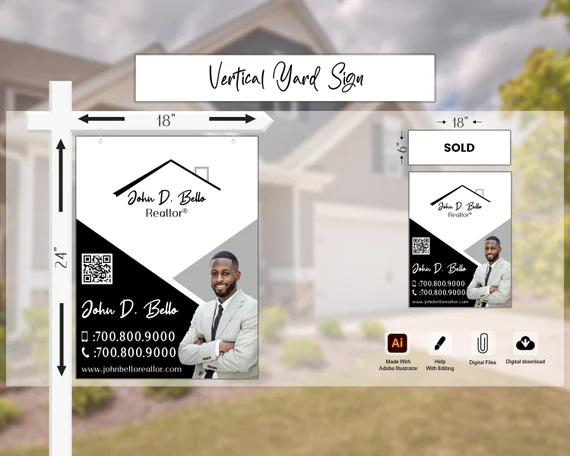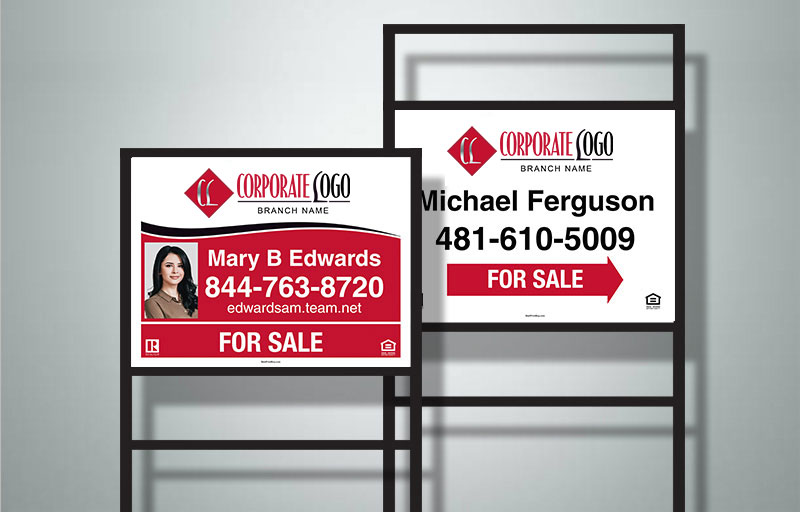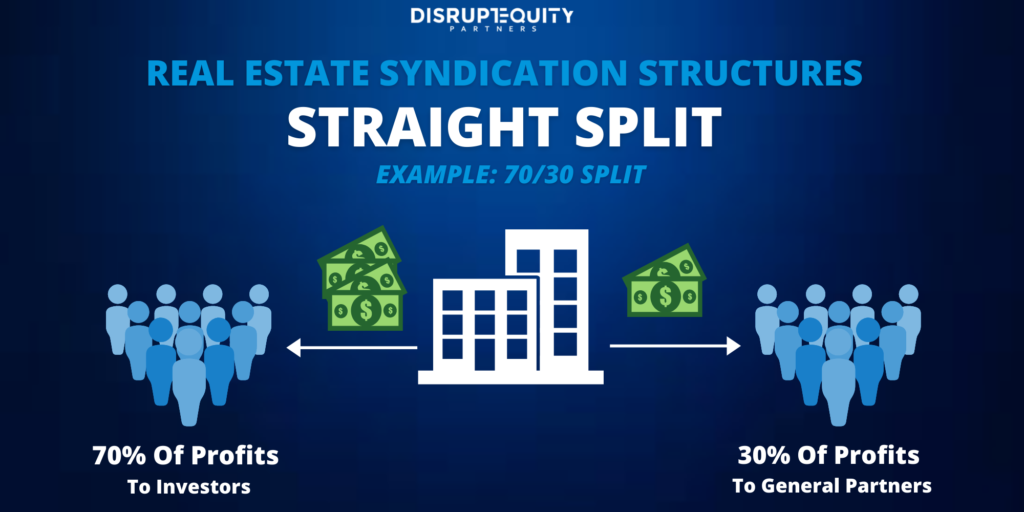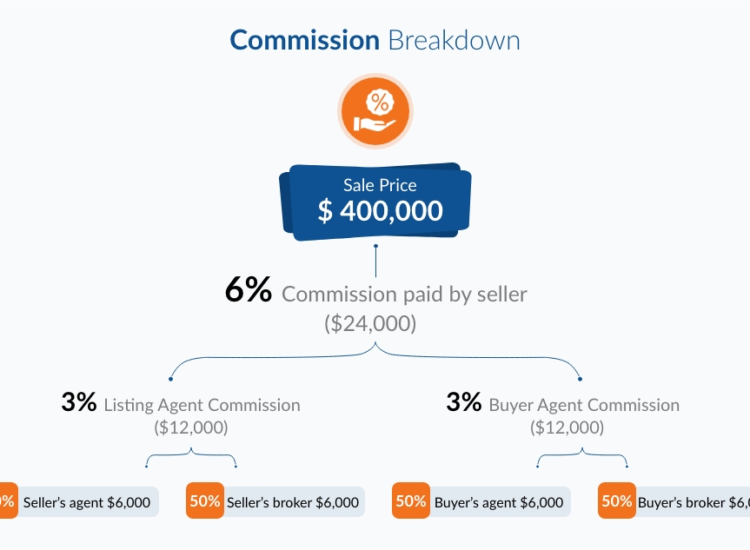Real estate signs have long been a staple in the industry, serving as a vital tool for marketing properties. However, in today’s digital world, these signs hold even more potential when integrated with online strategies. In this article, we’ll explore the importance of real estate signs, their benefits, types, best practices for design and placement, and their role in the digital age. We’ll also showcase case studies of successful sign strategies to illustrate their effectiveness.
Toc
Introduction to Real Estate Signs

Real estate signs are physical advertisements that are placed on or near a property to attract potential buyers. They typically include information such as the property’s address, price, and contact details for the real estate agent or agency representing the property. These signs have been used for decades in the industry and remain an essential tool for marketing properties.
What is the Importance of Real Estate Signs?
Real estate signs serve as a primary means of advertising properties to potential buyers. While online listings and social media have become popular ways to advertise properties, real estate signs still play a crucial role in attracting local buyers who may be driving or walking by the property. These signs are also an effective way to create brand awareness for real estate agents and agencies.
Benefits of Real Estate Signs
- Creates Exposure: Real estate signs increase exposure for a property, making it visible to potential buyers who may not be actively searching online.
- Cost-effective: Compared to other forms of advertising, such as print ads or billboards, real estate signs are relatively inexpensive.
- Establishes C
The Importance of Real Estate Signs
Real estate signs serve multiple purposes in the marketing process. First and foremost, they act as a wayfinding tool for interested buyers who may be driving through a neighborhood looking for properties. A well-designed sign can catch their attention and lead them to inquire about the property.
Additionally, real estate signs help create brand awareness for real estate agents and agencies. By consistently using the same design and branding on their signs, agents can establish a visual presence in the local community.
Moreover, real estate signs serve as a form of social proof for potential buyers. Seeing a sign indicating that a property is “For Sale” or “Sold” can create a sense of urgency and credibility, making the property more desirable.
Types of Real Estate Signs

There are several types of real estate signs that can be used to market properties. These include:
Yard Signs
Yard signs are perhaps the most recognizable type of real estate sign. Typically placed directly in front of a property, these signs come in various sizes, shapes, and materials, allowing agents to customise them to reflect their brand’s identity. A well-designed yard sign should be clear, concise, and readable from a distance, featuring essential information like the agent’s contact details and a standout “For Sale” or “Open House” indication. Additionally, including a QR code can lead prospective buyers to online listings or virtual tours, bridging the gap between physical and digital marketing strategies.
Open House Signs
Open house signs are crucial for promoting scheduled viewings of a property. These signs direct traffic to the property during open houses, making it easier for potential buyers to find their way. It’s advisable to use bold arrows and clear wording to highlight the date and time of the open house event. Effective placement of these signs along main roads and intersections can significantly increase foot traffic and boost interest in the property.
Directional Signs
Directional signs play a vital role in guiding potential buyers to a property that’s not easily seen from the main road. These signs can be strategically placed at different points throughout the neighborhood to lead visitors directly to an open house or showing. Using directional signs enhances convenience for prospective buyers, ensuring they can easily navigate to the property without any hassle.
Custom Signs
In some cases, agents may opt for custom signs tailored to specific marketing strategies or property features. These signs could incorporate unique elements such as LED lighting or innovative materials to capture attention and differentiate the property from others on the market. Custom signs can also highlight unique selling points—like being near popular amenities—allowing agents to cater to the specific desires of potential buyers.
In conclusion, understanding the various types of real estate signs available and how they can effectively serve different marketing purposes is essential for any agent looking to optimise their property sales strategy. Each sign type contributes uniquely to attracting interest and creating memorable impressions on potential buyers, solidifying the role of real estate signs in modern marketing.
Best Practices for Design and Placement

To get the most out of real estate signs, it’s crucial to follow best practices for design and placement. Consider the following tips:
Keep it Simple
When designing real estate signs, simplicity is key. Use clear, legible fonts and limit the amount of text to ensure that information is easily digestible at a glance. Focus on the essential details: property status, agent contact information, and a standout visual element such as an eye-catching logo or graphic. By avoiding clutter, potential buyers can quickly grasp the message without feeling overwhelmed.
Use Contrasting Colors
A visually striking sign often employs contrasting colors to enhance readability. For example, a bright, bold background with dark text will stand out against the natural backdrop of a lawn or street. Ensure that the color palette aligns with your brand identity while also being vibrant enough to attract attention from afar.
Consider Sign Placement
Placement is just as important as design. Signs should be positioned in areas with high visibility, such as near busy intersections or walkways. Ensure that they are set at eye level to maximise exposure and keep them clear of obstructions. Regularly assess the surrounding environment to maintain optimal position and visibility, adjusting as needed to reach potential buyers effectively.
Incorporate Technology
Incorporating technology into your signs can bridge the gap between traditional marketing and the digital realm. By adding QR codes or NFC tags, prospective buyers can easily access additional property information, including virtual tours and agent details, directly from their smartphones. This modern approach not only enhances engagement but also streamlines the purchasing process.
By adhering to these best practices, real estate signs can become powerful tools in attracting potential buyers and establishing a vibrant presence in the market.
By following these best practices, real estate signs can be a valuable tool in attracting potential buyers and establishing a strong brand presence in the industry. As technology and marketing strategies continue to evolve, there’s no doubt that real estate signs will remain an essential aspect of property advertising for years to come. So, it is crucial for agents to continue using them effectively in their overall sales strategy.
The Role of Real Estate Signs in the Digital Age
Incorporating real estate signs with online marketing strategies enhances their effectiveness. Here are some ways to integrate physical signs with digital efforts:
QR Codes
Adding QR codes to real estate signs is a powerful way to bridge the gap between physical marketing and digital resources. These scannable codes can link potential buyers directly to property listings, virtual tours, or even social media pages, enabling easy access to more detailed information without the need for lengthy phone calls or web searches. Placing the QR code prominently on the sign encourages interaction, enticing passerby to engage further and learn more about the property. Additionally, tracking the scans can provide valuable insights into buyer interest and sign effectiveness, helping agents tailor their marketing strategies accordingly.
In the digital age, social media platforms serve as significant promotional tools for real estate agents. By encouraging sign viewers to follow their social media accounts, agents can build a community around their brand and keep potential buyers informed about new listings, open houses, and market trends. Including social media handles on signs allows for constant engagement with a wider audience, facilitating the sharing of property information and testimonials, which can significantly enhance reputation and trustworthiness in the market.
Virtual Tours and Open Houses
The rise of technology has also enabled agents to offer virtual tours through their signs. By featuring a URL or QR code that links to a virtual guided tour, they provide an immersive experience at the click of a button. This allows potential buyers to explore properties from the comfort of their homes, making it especially appealing for those who may be out of town or unable to attend in-person showings. Promoting virtual tours alongside traditional open house signs creates a comprehensive marketing approach that caters to diverse buyer preferences, ultimately expanding the pool of interested clients.
By leveraging technology in conjunction with traditional real estate signs, agents can enhance their visibility and reach, ensuring they remain competitive in an increasingly digital marketplace. This strategic integration of physical and online marketing not only maximises engagement but also fosters deeper connections with potential buyers, ultimately driving sales success.
Case Studies of Successful Real Estate Sign Strategies

To further emphasise the importance and effectiveness of real estate signs, here are two successful case studies:
The “Sold in 24 Hours” Sign
A real estate agent in a competitive housing market strategically placed a sign that read “Sold in 24 hours” on their property listing. This eye-catching sign not only stood out among other properties but also created a sense of urgency and excitement for potential buyers. The sign garnered significant attention, resulting in multiple offers and the property being sold at a higher price than anticipated.
The Technology-Integrated Sign
A real estate agent utilised QR codes on their signs to provide virtual tours and additional property information. By doing so, they were able to attract a wider audience and increase engagement with potential buyers. This resulted in a faster selling process and more satisfied clients who appreciated the convenience of accessing information digitally.
Bold Custom-Designed Yard Signs with QR Codes and Social Media Handles
A real estate agency invested in custom-designed yard signs featuring their branding, contact information, and QR codes that linked to virtual tours. They also included their social media handles on the signs, promoting engagement with potential buyers through multiple channels. This approach enhanced their brand visibility and credibility while effectively generating interest in their listings.
As these case studies demonstrate, implementing innovative strategies and incorporating technology into real estate signs can have a significant impact on sales success and client satisfaction. By continuously evolving and adapting to new marketing trends, agents can maximise the potential of this traditional advertising tool in the digital age. So, it is crucial for agents to continually assess and improve their sign placement, design, and integration with digital marketing efforts to stay ahead in the competitive real estate market. So, it is clear that real estate signs remain a vital component of an effective sales strategy, making them a valuable investment for agents looking to achieve success in the industry.
Conclusion
In conclusion, real estate signs play a critical role in property marketing, even as the industry shifts towards more digital-focused strategies. They not only serve as a visual representation of the property for sale but also provide tangible touchpoints that can drive potential buyers to engage further with listings. By creatively integrating technology, such as QR codes and social media, agents can enhance the functionality of traditional signs, making them tools for both immediate engagement and long-term relationship building. As the market continues to evolve, agents must remain proactive in adapting their strategies to incorporate innovative techniques, ensuring that their listings stand out in an increasingly competitive landscape. Ultimately, a well-executed real estate sign strategy, combined with a robust online presence, can result in quicker sales and greater client satisfaction, underscoring the enduring importance of this marketing element.










